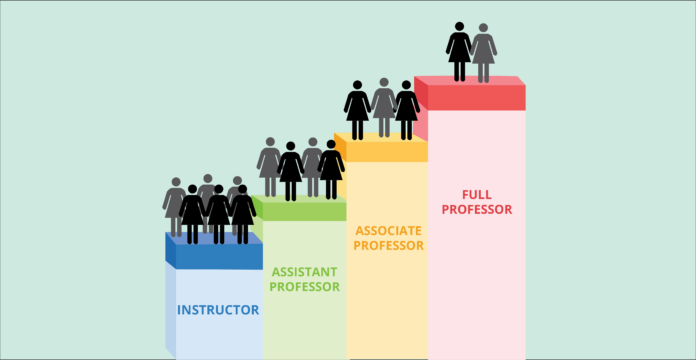Recent findings report that male and female employees, including those at SRU, are unequally represented within faculty ranks across schools in the Pennsylvania State System of Higher Education (PASSHE). This has indirectly led to a gap in pay between men and women who work for the state system.
The PASSHE Women’s Consortium conducted a study from the years 2005-2020 which examined average pay rate and rank across male and female faculty in the 14 PASSHE schools. The study was compiled into a report that was published and shared with consortium members at a conference in 2021.
According to the report, “Female faculty are more likely to be in lower rank positions than male faculty, are more likely to be in temporary positions and are more likely to be in part-time positions. This is true for every year, and for every institution overall…”
When describing rank, the report is referring to the different levels faculty must climb to become a full professor. The faculty ranks in the PASSHE system from lowest to highest pay grade are instructor, assistant professor, associate professor and full professor.
“Women are really well represented at the instructor rank…” previous president of the Women’s Consortium and associate professor at SRU, Emily Keener, said. “If you go to the other end of the continuum where the highest rank is full professor, women are underrepresented.”
It was reported that, in that 15-year period, just over 50% of PASSHE faculty were female. However, male faculty accounted for 60% of full professors.
At Slippery Rock specifically, 51% of faculty were female during this period, while only 41% of full professors were women.
The report also found that 26% of total full-time male faculty at SRU were full professors, compared to the 18% of full-time female faculty.
“If you were to compare the average rank of men versus women, men would still be at a higher rank overall,” Jana Asher, a statistician at SRU, said in a video presentation of the report.
Aside from rank, women in the PASSHE system were 0.91 to 2.84 times more likely than men to be in a temporary faculty position. At SRU, women were 1.24 times more likely to be temporary workers and 1.26 times more likely to be in a part-time position as of 2020.
“In other words, female faculty are disproportionately represented in temporary positions, and male faculty are disproportionately represented in permanent positions,” an official summary of the report said.
“That’s not good,” Asher said in the video, “those are the positions that go away, the positions that don’t pay as well.”
Still, rank and permanency are not the only determiners of salary.
“We found that overall within rank, women still have a lower average starting salary than men,” Keener said. They mentioned that this statement is not true for all years at all schools, and was most notable at the instructor rank.
The report stated that female full-time tenured instructors at SRU made an average of $3,315 less than males in the same position. Female assistant professors made approximately $216 more than males in the position, and women associate professors made an average of $723 more than men. Full female professors made an average of $995 more than their male counterparts.
This equated to female faculty members making an average of $345.25 less than male faculty members at Slippery Rock. This difference was more apparent in the salaries of faculty at other PASSHE schools
“After 30 years, a couple hundred dollars starts to add up,” Asher said.
“Although some gaps seem small, they are consistent (some with wide ranges) and are thus a troubling indicator of systemic gender bias,” the report summary said.
According to that summary, the gap affects not only faculty but students as well.
“The ratio of female students to female professors is significantly higher than the ratio of male students to male professors…” it said. “Female students seeking female faculty mentorship will have more difficulty gaining the time and attention of those faculty… female faculty might bear mentoring as compared to their male counterparts.”
Keener stated that, while the promotion gap is likely a result of system bias, there may also be several sociological factors affecting the data as well.
“Culturally, women are taught that they aren’t good enough or that they’re not smart enough,” Keener said. “It’s like an imposter syndrome…it could be due to something like low self-esteem, but there can be other barriers too.”
“Academia claims to be a meritocracy, but it’s as vulnerable as any workplace to bias and discrimination,” an SRU professor, who preferred to remain anonymous, said.








